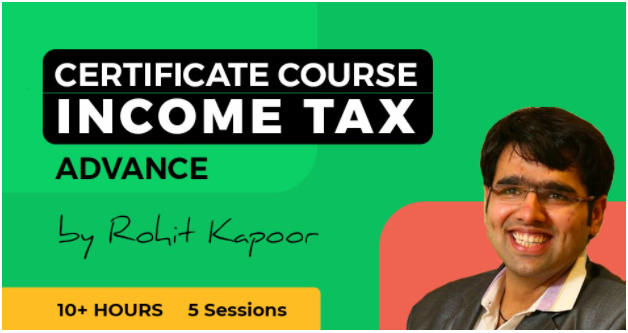9 Investment Options to Save Income Tax
There are many sections in the Income-tax act that give exemptions and deductions to encourage people to invest in different assets and various financial schemes. This gives financial and social security to the taxpayers and helps the government in arranging funds for various infrastructural projects. Today we shall discuss some investment options that will serve a dual purpose. They will not only save tax but also give good returns.
- 1 Fixed deposit in Bank/Post office
- 2 Life Insurance /ULIP
- 3 Mutual Fund/ ELSS/ Stocks
- Advantages of investing in Mutual funds
- How does ELSS compare with other Tax Saving instruments?
- 4 Public Provident Fund (PPF) 7.1% / Recognized Provident Fund
- The table on taxability on withdrawal of EPF
- 5 National Saving Certificate(NSC) 6.8%
- 6 Contribution to National pension scheme
- 7 RBI bonds
- 8 Purchasing a house or land for making a house (including commercial property for leasing on rent)
- First-time homebuyer by taking a loan
- Deductions available for interest paid on Home loan sec 80EE and 80 EEA
- 9 Purchasing Agricultural land
1 Fixed deposit in Bank/Post office
Bank Deposits
This is the most popular method of investment adapted by the general public because of their faith in the government and the Indian banking system. Though according to the bank, a person’s deposits up to 5 lakhs are insured in the bank i.e. in the event of a bank going bust, a person will receive;
a) 5 lakhs or
b) his investment in the bank
Whichever is lower.
But we have seen in the past that many banks were on the verge of collapse but all were saved by the government. The return on F.D. for the normal public has reduced to approximately 5.25% and for senior citizens 5.75% but still people are ready to invest in the banks only and that too in public sector banks despite their low-grade services in comparison to private banks. The lock-in period is the period for which the term deposit has been done. The rate of interest on a saving account is 2.9%. Interest on a savings account is deductible up to 10000 u/s 80TTA and interest on F.D. is deductible up to 50000 (for senior citizens only) u/s 80 TTB. The people who give advice to others regarding various investment options keep their own money in banks only.
Related Topic:
New Regime of Income Tax Search and Seizure Assessments – Glaring Implications
Post office Deposits
The return on F.D.in post offices is slightly better for senior citizens i.e. 6.1%. Both the above deductions are available in post office deposits also. The interest is credited to the savings account on a monthly or quarterly basis. The rate of interest changes every 3 months.
2 Life Insurance /ULIP
Life insurance
This investment serves a dual purpose. You get the benefit of insurance as well as an investment which is disclosed in the policy. Here the amount is invested in various instruments and the policyholder is given a definite bonus. If the premium paid is within the limits given in the table then it qualifies for deduction u/s 80C. Any amount paid as a premium in excess of the prescribed limit will not qualify for the deduction and would cause the maturity amount to become taxable.
| Date of purchase of the policy | Annual Premium paid (% of actual sum insured) i.e. Policy amount |
| Before 31.3.2012 | 20% |
| After 1.4.2012 | 10% |
| For disabled persons
After 1.4.2013 |
15% |
At maturity, if the premium paid was within the limits according to the table then the amount received is fully exempt u/s 10(10D).
If the premium payable in any year exceeds the prescribed percentage i.e. 10%, 15% or 20% of the actual sum assured, as described in the table, then the whole proceeds from the policy would get taxed in the year of receipt. However, in case of death of the insured person, where his nominees receive the policy proceeds the same shall be tax-free in the hands of the nominee(s) even if the premium paid in any year crosses the prescribed percentage of sum assured.

ULIP
The full form of ULIP is Unit Linked Insurance Plan, which is a dynamic and multibranched life insurance product. A ULIP plan is a combination of life insurance and investment. It is a mixture of the usual life insurance policy and the features of a mutual fund. The premium paid is deductible u/s 80C and the maturity amount is exempt u/s 10(10D) with certain conditions. The premium paid by the policyholder is divided into two parts.
One part goes into paying for the following expenses;
1) fund allocation charges
2) Policy administration charges
3) Fund management charges
4) Mortality Charges
The remaining is pooled with the assets received from other policyholders and then invested in financial instruments (i.e. equity and debt), similar to mutual funds. The return is dependent upon the performance of the fund unlike in normal life insurance where it is predefined at the inception of the policy.
| Type of fund | Type of investments | Risk category |
| Equity fund | The main investment in stock of companies | High |
| Debt fund | Fixed-income products,
Government and corporate bonds, Corporate Securities |
Low |
| Balanced/Hybrid Fund | Combination of both company stocks and fixed income products | Medium |
The minimum time period for which the policy must be held by the policyholder in order to retain tax benefits on premium paid are:
In case of single premium life insurance policy – 2 years from the date of commencement of the policy.
In the case of ULIPs – at least 5 years, for which premium has been paid, from the start of the policy.
Any other life insurance policy – at least 2 years
The policyholder is required to run the life insurance policy and pay the premiums regularly for a minimum number of years as specified in section 80C to retain the benefits he has already taken. As per section 80C(5), if the policyholder surrenders his policy voluntarily or in case his policy is terminated by the insurer before the predefined time limit, on failure to pay the dues (i.e. premiums), then the benefits under section 80C on premium paid for that policy would not be available to him. This means that the surrender amount received by him would be taxable in the year of receipt.
Key features
- You can change your investment from one type of fund to another depending upon your condition.
- You can also make partial withdrawals after the completion of the initial 5-year lock-in period
- You can increase your investment by making single premium additions (alongside the regular premium paid) as and when desired.
Related Topic:
Relaxation in electronic filing of Income Tax Forms 15CA / 15CB: CBDT
3 Mutual Fund/ ELSS/ Stocks
Mutual funds collect the funds from various investors and then invest in different types of financial instruments. They can be categorized into two types;
- Debt Funds
- Equity funds
Debt Funds
In a Debt fund, investment is done in fixed income instruments, such as Corporate and Government Bonds, treasury bills, commercial papers, corporate debt securities, and money market instruments, etc.
They have a low-cost structure, more safe and stable returns, and relatively high liquidity. The rate of return is higher than Bank F.D. i.e. 6-7%
They are recommended for people who have a low-risk appetite and want a steady income without any hassles.
The Lock-in period and recurring (regular) income is not specific. It depends upon the type of scheme and the amount invested.
If you hold the units of a debt fund for a period of fewer than three years then, Short term capital gain will be applicable which would be clubbed with your other gross income. If you hold the units for more than 3 years then, the long-term capital gain tax would be applicable and would be taxed at 20%. The benefit of indexation is available.
Any interest/ earning / profit from the fund is distributed as dividend income, which is taxable under other sources as per slab rates.
Related Topic:
New Revised Due Dates Under Income Tax Act 1961 AY 21-22
Equity funds (ELSS- Equity linked saving scheme)
In this, the investible corpus is predominantly invested into equities. The rate of return is more than the debt fund i.e. 10-12 %. The amount invested is eligible for deduction u/s 80C. There is a lock-in period of 3 years. But it is advised that investors should remain invested for at least 5-7 years to get a good return since the equity market is volatile and does not show much appreciation in 3 years. However, ELSS also comes with some risks inherent in equity investments.
There are two types of ELSS
a. Growth Fund is a long-term plan for investors who believe in wealth creation by capital appreciation, where the full value of the fund is realized at the time of redemption upon maturity.
b. Dividend Payout can be further divided into sub-categories – Dividend Payout and Dividend Reinvestment. In the case of the Dividend Payout option, you will receive taxable dividends. Whereas under Dividend Reinvestment, your dividends will be reinvested as a new investment.
The dividend received is taxable under other sources. If the amount of dividend is more than 5000, then a TDS of 10% (reduced to 7.5% due to corona) will be deducted by the company u/s 194K. If you have paid any interest against that investment then it is allowed as a deduction but only up to 20% of the dividend received.
If you hold the units for more than 1 year then, the long-term capital gain is exempt up to 1 lakh and then taxable at 10 %. No benefit of indexation is available. If you hold them for less than 1 year then, Short term capital gain tax will be levied @15%.
There are two ways of investing in ELSS
- SIP (systematic investment plan)
You can invest small amounts per month according to your cash flow. You can make a large pool by investing in small amounts regularly.
- Lumpsum Investment Plan
You can invest a definite large amount in this plan.
Related Topic:
Income Tax Informants Rewards Scheme, 2018: CBDT
Advantages of investing in Mutual funds
Flexibility- You have the freedom to invest in one go or in small amounts. You can receive monthly returns or at maturity. The dividends received can also be reinvested.
Affordability- They are within the reach of the common man. There is no boundation on the amount of investment. You can start investing even from 500 only.
Potential of return –The potential of upside returns is enormous. Usually, you get a 10-12 % return which is quite high considering the rate of interest in bank fixed deposits.
Regulatory- The whole sector is under the strict watch of a regulator and the government is also encouraging the small investor.
Low Costs The benefits of scale in brokerage, custodial (depository fees), and other administrative fees translate into lower costs for investors.
Least lock-in period –The ELSS has the least lock-in period in comparison to other instruments.
No entry or exit costs- There are no entry or exit costs in the scheme.
Related Topic:
How does ELSS compare with other Tax Saving instruments?
| Name of Instrument | Lock-In period | Returns | Tax on Returns |
| ELSS | 3 Years | 10-12% | Capital Gain Tax and other sources |
| Tax-Saving FD | 5 years | 5-6% | Income Tax on interest |
| National Saving Certificate (NSC) | 5 years | 7-8% | Income Tax on interest |
| Public Provident Fund (PPF) | 15 years | 7-8% | No |
| National Pension System (NPS) | Up to age 60 | 8-10% | Partially Taxable |
As is evident, ELSS funds are much better than other tax-saving instruments, with the lowest lock-in period (3 years) and better returns. They are also tax-efficient. But they have a slightly higher risk than other instruments.
4 Public Provident Fund (PPF) 7.1% / Recognized Provident Fund
It is a kind of security fund in which employees contribute themselves and the employer also contributes for the welfare of the employee. There are four types of provident funds.
- Statutory Provident Fund – Mostly the employees of Government, universities, and Educational Institutions contribute to this fund.
- Recognized Provident fund-This fund is recognized by the Commissioner of Income Tax. It applies to those organizations that have at least 20 employees.
The table on taxability on withdrawal of EPF
The following table will help you easily understand the taxability on withdrawal of EPF:
| Scenario | Taxability |
| When the amount withdrawn is < 50000 before completion of 5 years of continuous service | No TDS, however, the withdrawal has to be disclosed in the return. |
| When the amount withdrawn is > 50000 before completion of 5 years of continuous service and all of the following conditions are met;
a. The amount of RPF is not transferred to another RPF b. The termination of service is not because of the ill health of the employee c. The amount is not transferred to any NPS d. The termination of service was out of the volition of the employee and the employer’s business was still continuing e. There is no health issue/medical emergency. |
TDS deducted @ 10%, if PAN is furnished;
No TDS in case Form 15G/15H is furnished. The amount will be treated as an unrecognized provident fund Contribution from employer and interest on that is taxable under the head Income from Salaries; Interest on an employee’s contribution is taxable under the head Income from Other Sources. The employee contribution which was deducted u/s 80C will become taxable now. The amount received will be added to the income of the current year. |
| Withdrawal from RPF after 5 years of continuous service | No TDS. The amount is exempt u/s 10(12) |
| Transfer of RPF from one account to another upon a change of job and the combined service exceeds 5 years | No TDS. The amount is exempt u/s 10(12) |
| Withdrawn before the completion of 5 years of continuous service because got terminated due to ill health, the business of the employer is discontinued or the reasons for withdrawal are beyond the employee’s control. | No TDS. The amount is exempt u/s 10(12) |
- Unrecognized Provident fund- This fund is started by the employers and employees voluntarily. It is not recognized by the Commissioner of Income Tax
- Public Provident fund-This fund has been established under Public Provident Fund Act,1968. It belongs to (E,E,E) category i.e. Exempt,Exempt,Exempt. Both salaried and self-employed people can contribute to this fund. A person can deposit a maximum of 12 times in a year. A minimum contribution of 500 and a maximum of 150000 rupees per annum can be done. Ideally, a person can withdraw complete funds after 15 years of opening the account. But in certain conditions, they can be withdrawn earlier also. After the completion of 4 years, 50% of funds can be withdrawn. The account can be closed after the completion of 5 years in very special circumstances after a deduction of 1% of the fund value.
Table showing taxability of various components of the different types of Provident Funds
| Payments or
Receipts |
Statutory P.F. | Recognized P.F. | Unrecognized P.F. | Public P.F. |
| Employer’s contribution | Not taxable | Contribution up to 12% of salary is exempt, above that is added to the salary income of the employee. | Not taxable | Not taxable |
| Employee contribution | Applicable for deduction u/s 80C | Applicable for deduction u/s 80C | Not applicable for deduction u/s 80C | Applicable for deduction u/s 80C |
| Interest credited to P.F. | Exempt | Interest credited up to 9.5% is exempt and above that is taxable under salaries | Not taxable | Exempt |
| Withdrawal at the time of retirement or termination of service | Exempt | Exempt upon completion of certain conditions | Contribution from the employer and interest thereon is taxable under the head Income from Salaries;
Contribution by an employee is not taxable; Interest on an employee’s contribution is taxable under the head Income from Other Sources. |
Exempt |
Related Topic:
5 National Saving Certificate(NSC) 6.8%
It is an Indian Government saving Bond. It is a part of the Postal savings system of India. Small to medium-size investors invest in these bonds. It is just like a fixed deposit in the bank. The amount invested is eligible for deduction u/s 80C. The interest accrued each year is again invested and eligible for deduction u/s 80C. The maturity amount is exempt from tax but interest is taxable annually on an accrual basis under “other sources” but eligible for deduction. These bonds are available in different denominations and for 5/10 years. As they are issued by the government they are very safe and give a return more than bank F.D. i.e. 6.8%. The minimum lock-in period is of 5 years.
6 Contribution to National pension scheme
Both salaried and self-employed can invest in NPS. For the salaried up to 10% of salary, each employer’s and employee’s contribution is deductible. For the self-employed up to 20% of gross income is allowed as deduction (80 CCD1 and 80 CCD2). An additional investment of 50000 is deductible u/s 80CCD(1B).
The exposure in equities is approximately 50 % of the total fund. Balance is debt and government securities. The fund gives around 8-10% of the annual return. The amount can be withdrawn at the age of retirement i.e.60 or even before that. It is a quite safe scheme as it is covered under PFRDA (Pension fund Regulatory and Development Authority) established by the central government. It provides you with the flexibility to withdraw for emergencies and also makes arrangements for your retired life. As these funds are earmarked for providing pension they are invested in relatively low risk and steady return providing instruments.
a. Withdrawal before maturity ( before the age of maturity)
There is a lock-in period of 10 years. After that, you can withdraw up to 25% of your contribution (not the fund) for some specific purpose. You can withdraw again at least after 5 years and a maximum of 3 withdrawals can be made before retirement. The amount withdrawn will be tax-free.
b. Withdrawal at the time of maturity (60)
You can withdraw 60% of the value of your fund and the balance of 40 % will be utilized in purchasing an annuity for providing monthly pension (tax-free) to the subscriber. Out of the 60 % withdrawn, 40% is tax-free and the balance 20% will be clubbed to the gross income to be taxed at the normal slab rates.
If you are not satisfied with the return or management of the Fund manager then you can also change the Fund manager.
Related Topic:
Income-tax (3rd Amendment) Rules, 2021: CBDT
7 RBI bonds
The rate of interest on RBI bonds is 7.15 %. It keeps on changing every 6 months. The tenure of R.B.I bonds is 7 years. The interest is fully taxable. The minimum amount of investment to be done is Rs 1000. Senior citizens can withdraw after 4,5,6 years depending on their age.
8 Purchasing a house or land for making a house (including commercial property for leasing on rent)
With the decreasing bank interest rates and turmoil in the stock market, real estate seems a very reliable and better return-paying option. Most people invest in real estate to get capital appreciation and earning rent.
Also owning a house is a dream which everyone wants to fulfill in his lifetime. The government also wants the same thing and has provided ample incentives and means to people to invest their savings in buying their dream home.
a. Purchasing after selling a previous house sec54
If a person wants to sell his previous residential house and purchase or construct a new one, then; According to section 54, the whole of the Long term Capital gains Tax is exempt (with some conditions) if he purchases or constructs up to two houses (previously one).
The amount of exemption will be lower of the two (i) investments in the new house (ii) the capital gain arising from the sale of the previous house. This will enable the person to buy a new house and not to use that money in any other business or risky investments.
b. Purchasing a house after selling any other capital asset sec 54 F
If a person sells any capital asset (other than residential property) and purchases or constructs a new residential house then; According to section 54 F
The amount of exemption of long term capital gain will be;
Amount of exemption = capital gain * (amount invested / net sales consideration)
- Purchase of house by taking a home loan
If a person takes a home loan and purchases or constructs a new residential house then the payment of interest is deductible under section 24(b) under House property and u/s 80EE. Also, the payment of principal is eligible for deduction sec 80C. The rate of interest on home loans provided by banks is also very nominal ranging from 6.9 % to 7.5%.
First-time homebuyer by taking a loan
The department is encouraging housing for all under the affordable housing scheme and Atal Aawaas Yojna. Deduction for interest is available u/s sec 24(b) and 80EEA.
A comparative study of both the sections has been made below;
Deductions available for interest paid on Home loan sec 80EE and 80 EEA
| Section | 80EE | 80EEA |
| Property Value | Up to 50 lacs | Up to 45 lacs |
| Loan amount | Up to 35 lacs | Not specified |
| Loan taken period | 1.4.16 to 31.3.17 | 1.4.19 to 31.3.21 |
| Max deduction | 50000 | 150000 |
| Lock-in period | none | none |
Notes-For 80EEA– The taxpayer should be a first-time homebuyer. The taxpayer should not own any residential house property on the date of sanction of the loan.
The person can take a deduction only under one of the two sections.
This deduction is above the maximum deduction for the interest of 200000 u/s 24 in HP
d. Commercial property
Many people invest in commercial property for capital appreciation and earning higher rent than residential property.
9 Purchasing Agricultural land
The land is the only asset whose value never depreciates. Agricultural land is the most sought-after asset because of its unique qualities as per the law. We are today telling you about two types of agricultural land;
a. Urban agricultural land u/s 54 B
A person can purchase urban agricultural land, both for capital appreciation and earning agricultural income. Agricultural income is exempt from tax and under sec 54 B capital gains arising from the sale of such land is also exempt ( with some conditions)
b. Rural agricultural land
This land is not considered a capital asset and therefore capital gains do not apply.
Agricultural income is anyways exempt.
If you already have a premium membership, Sign In.
 ConsultEase Administrator
ConsultEase Administrator
Consultant
Faridabad, India
As a Consultease Administrator, I'm responsible for the smooth administration of our portal. Reach out to me in case you need help.












